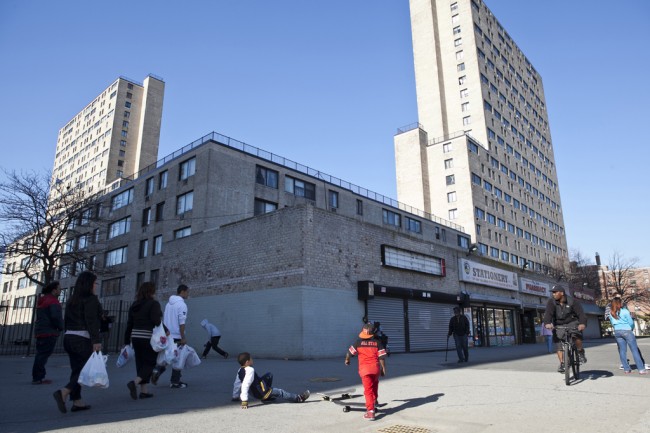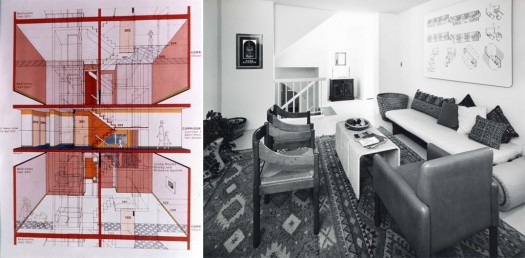
We are celebrating 15 years — and counting — of stories that are deeply researched and deeply felt, that build a historical record of what the city has been.
We are celebrating 15 years — and counting — of stories that are deeply researched and deeply felt, that build a historical record of what the city has been.
To mark the fifth anniversary of the launch of Urban Omnibus, we look at themes that have emerged in our content over time and think about what those threads reveal about the needs, desires, and priorities of the city today.
In New York, we are fortunate to have an extraordinarily diverse stock of residential buildings. Comfortable, attractive, and attainable places to live are nonetheless constantly in short supply. Adequate housing preservation and development is a frequent political promise — an ideal to strive for, yet always just out of reach. At the same time, it is too easy, and misleading, to reduce the conversation about housing to numbers, typologies, and locations of units; rather, what makes housing such a rich topic is what it reveals about our collectively held beliefs, priorities, and aspirations for urban life. For whom are we building the city of tomorrow? What is a family? What is home? What makes a neighborhood? “Housing” – architecture’s most fundamental and familiar of spaces – has never been just about buildings.
Institutionally, the Architectural League has a long and consistent history of engaging the issue of urban housing in a variety of formats. A sample:
In 1987, the League collaborated with the New York City Department of Housing Preservation and Development to launch a design study, called Vacant Lots, examining the potential of small-scale infill housing to contribute to the city’s affordable housing portfolio. In 2000, the League commissioned four design teams to propose alternate visions for the development of the Arverne urban renewal site on the Rockaway Peninsula in Queens (today, the future of the area is being considered with renewed effort by an unaffiliated international design competition called FARROC). The League’s 2003 traveling exhibition and website, Urban Life: Housing in the Contemporary City, brought together a group of recently completed, innovative, and successful housing projects from four different continents, as well as a complementary exhibition on local residential architecture, Housing the City: Strategies for Multiple Dwelling in New York 1830-2004.
Of late, the League has extended this legacy through a variety of projects and partnerships that have found a public forum here on Urban Omnibus. A video introducing the 2011 Making Room project outlines the League’s partnership with Citizens Housing and Planning Council on a design study proposing new types of housing that might better match New York’s contemporary demographic make-up and how New Yorkers choose to live now (a compendium of information about the project was also published on the League’s site). Typecast — an ongoing, long-term investigation into maligned, over-simplified, or misunderstood building typologies — launched in 2013 with a focus on the isolated superblock apartment buildings known as “towers-in-the-park.” Omnibus has published photographic portfolios of five case study residential complexes (one in each borough), and is currently in the process of publishing complementary journalistic accounts revealing the particular confluences of historical, economic, architectural, and social forces that render each of these building complexes its own singular environment.

SeaRise, Coney Island, Brooklyn | Photo by David Lang
Alongside these projects, Omnibus has continuously identified and published the work of many creative individuals, groups, and government agencies that seek to advance our understanding of urban housing in its many forms. Exploring residential density in a staggering cross-section of Brooklyn communities, Neil Freeman’s Brooklyn Typology Project consists of thousands of photographs of residential buildings, detailed demographics, and historical information for a sampling of areas throughout Brooklyn, presented in a web of hyperlinks. Seema Agnani, then the executive director of the Chhaya Community Development Corporation, explained to us the many potential benefits of her organization’s ongoing effort to bring illegal accessory units in Queens under a regulatory framework. A conversation with Andy Reicher chronicled the history of The Urban Homesteading Assistance Board, a group that has remained effective in its quest to create home ownership opportunities by constantly adapting to New York City’s shifting circumstances over the past 40 years. Reminding us of Housing Works’ core mission, Gavin Browning explained the real estate development, supportive services, and advocacy efforts that the organization undertakes to actualize their mission of ending “the dual crises of homelessness and AIDS.” The difference between building structures and building communities was the main focus of an interview with Nancy Biberman, who discussed the work her organization, the Women’s Housing and Economic Development Corporation, is doing in the Bronx. Finally, Lindsay Haddix offered a city government perspective by giving a personal take on how New York City’s Department of Housing Preservation and Development promotes housing equality and viable neighborhoods by funding, incentivizing, developing, and preserving affordable housing.
Some of my favorite housing investigations on the site have taken the long view of a single development, considering the historical, political, economic, and of course design conditions that have converged to constitute a single settlement. Juliette Spertus and Susanne Schindler reported on two very different high-density projects in the Bronx — Co-op City and Twin Parks; Karen Kubey shared her research about Marcus Garvey Park Village, a low-rise, high-density project in Brownsville; and Rosalie Genevro told the story of the 46 residential towers of Starrett City in East New York. While each of these stories is distinct, all offer lessons for designers, planners, and housing advocates who seek to employ ambitious, innovative design strategies to increase and improve the housing stock of New York City today.
Speaking of the future of housing, reports from several graduate housing studios have featured the work of emerging talents and their original plans for critical development sites and issues throughout the city — a University of Michigan cohort studied the Lower East Side of Manhattan, a Harvard GSD group took on Naturally Occurring Retirement Communities, and two Parsons studios have been featured: one on the Lower Grand Concourse in the Bronx, the other on the potential of the undeveloped vacant land surrounding the Alfred E. Smith Houses in the Two Bridges neighborhood of Manhattan.

Twin Parks | L: Section perspective of skip-stop elevator typology and the resulting split-level apartments designed by Giovanni Pasanella. R: Photograph of the model unit of Pasanella’s split-level apartments, (c) Thorney Lieberman | Images courtesy of PKSB Architects, P.C.
Finally, in addition to exploring the culture of citymaking through the presentation of new, creative, and critical ideas about the many layers of our built environment, Omnibus continually strives to showcase intimate, first person experiences of unique New Yorkers who give those layers voice. In our Walks and Talks series, we’ve heard from two individuals who have contributed substantially to our ongoing conversation about housing: Monsignor Donald Sakano of Saint Patrick’s Old Cathedral on Mulberry Street offered us his deep understanding of the neighborhood’s history as well as the insights gained from decades of work on housing and neighborhood issues throughout New York City, while social scientist Dalton Conley described the powerful influence of the economics of homeownership on large-scale housing projects such as those where he grew up between Delancey and 14th Streets on the eastern edge of Manhattan.
The wealth of material to explore here for those who are interested in how we live in cities is vast, but only the beginning. The topic is rich and constantly evolving. We plan to keep up, so be sure to stay tuned for new projects and initiatives coming soon!
The views expressed here are those of the authors only and do not reflect the position of The Architectural League of New York.